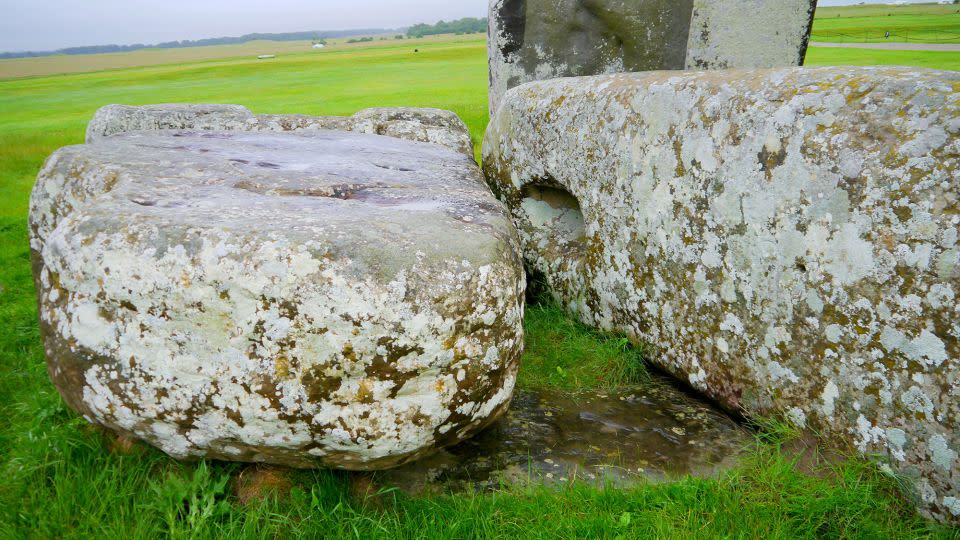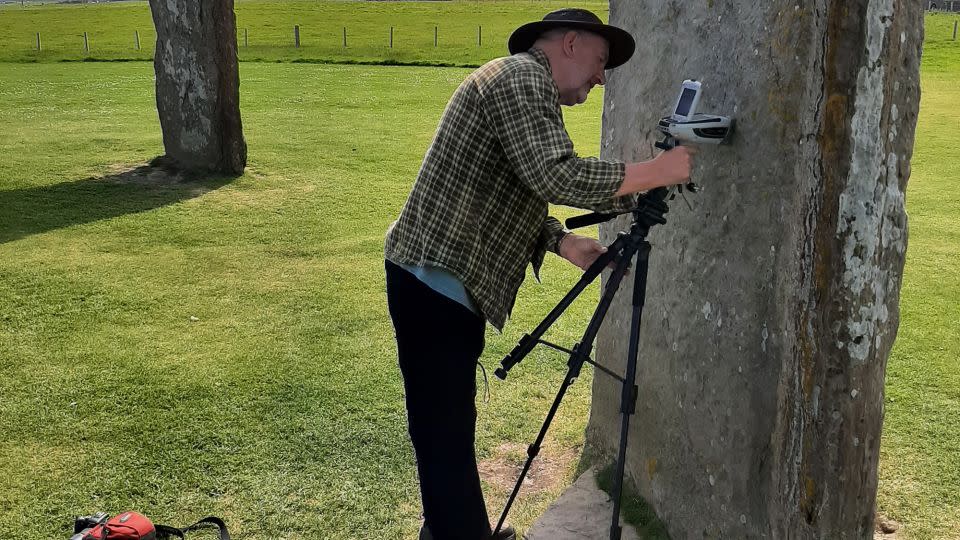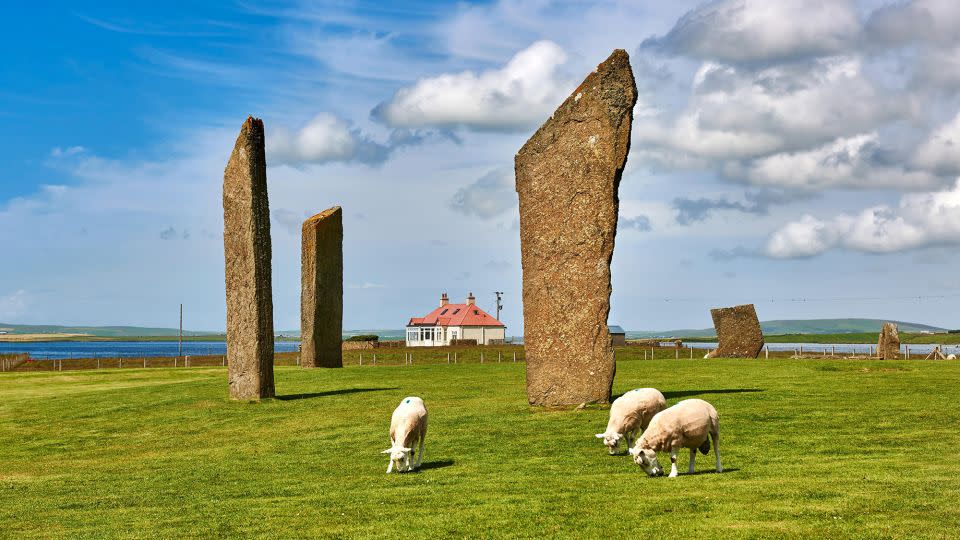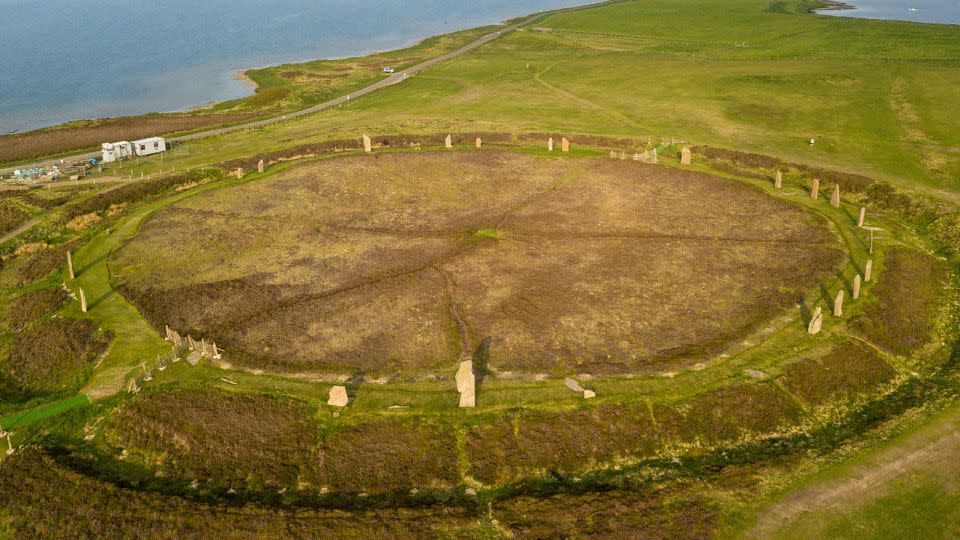Sign up for CNN’s Wonder Theory science newsletter. Explore the universe with news on fascinating discoveries, scientific advancements and more.
In the hopes of solving one of the enduring mysteries about the iconic monolith, geologists have shifted the search for the origins of Stonehenge’s central Altar Stone to Scotland after recent research redirected the quest from Wales.
But in a surprising twist, a new analysis suggests that the stone didn’t originate from Orkney, an archipelago off Scotland’s northeastern coast that’s home to 5,000-year-old Neolithic sites.
The findings, published September 5 in the Journal of Archaeological Science: Reports, come on the heels of a study released in August that pointed to northeastern Scotland as the likely origin for the Altar Stone. That research, published in the journal Nature, overturned a century-old idea that the stone came from current-day Wales.
The Altar Stone, the largest of the bluestones used to build Stonehenge, lies at the heart of the ancient monument in southern England. The 13,227-pound (6-metric ton) block was likely transported over 435 miles (700 kilometers) from northeast Scotland nearly 5,000 years ago, possibly by sea. But the purpose of the stone remains a mystery.
A geologic team, including many of the same authors of the Nature study, examined Neolithic-age stones at two well-known historic landmarks on Mainland, Orkney’s largest island, that were similar in size and rock type to the Altar Stone. But the analysis didn’t detect a connection.

“The mystery of where the stone came from is becoming clearer and clearer as we begin to rule out specific areas in north-east Scotland,” said lead study author Richard Bevins, honorary professor in the department of geography and Earth sciences at the UK’s Aberystwyth University, in a statement.
“This research is radically changing our thinking about the origins of the Altar Stone. It’s thrilling to know that our chemical analysis and dating work is slowly unlocking this great mystery.”
Piecing together an ancient puzzle
Construction on Stonehenge began as early as 3000 BC and occurred over several phases, according to previous research, and the Altar Stone is believed to have been placed within the central horseshoe during the second construction phase around 2620 BC to 2480 BC.


Substantial research has focused on the types of stone used to assemble the iconic circle in Wiltshire, England, over the years, and previous analyses have shown that bluestones, a type of fine-grained sandstone, and silicified sandstone blocks called sarsens were used in the monument’s construction. The landmark sits on the southern edge of Salisbury Plain, which was inhabited as early as 5,000 to 6,000 years ago.
The sarsens came from the West Woods near Marlborough, about 15 miles (25 kilometers) away, while some of the bluestones originated from the Preseli Hills area in west Wales and are thought to be the first stones placed at the site.
“The Altar Stone is anomalous in many ways to both the bluestones and the sarsens at Stonehenge,” Bevins said. “It lies in an unusual position at the monument, occupying a near central location and not within either the Bluestone Circle or the Bluestone Horseshoe. It is also grey-green sandstone, unlike all the other bluestone rock types.”
Bevins has been investigating Stonehenge for 15 years, and his search to understand the origins of its stones has taken him across England and Wales. But discovering that Wales was unlikely to be the origin site for the Altar Stone was a game changer, Bevins said.
“Suddenly we were unrestricted in our thinking about where the Altar Stone might come from, opening up completely new avenues for investigation and exploration,” Bevins said via email.
Seeking answers in Scotland
The search led the researchers to Mainland to conduct fieldwork in June 2023.
“Evidence for long distance links between Orkney and Stonehenge are related in part to exchange of certain styles of material culture,” Bevins said.
The long-standing link between Stonehenge and Orkney includes styles of decorated pottery and similar architecture of ancient dwellings found in both locations, Bevins said.


The team brought portable X-ray machines to Orkney to conduct a chemical analysis of minerals contained in exposed rocks at the Stones of Stenness and the Ring of Brodgar, two ancient remnants of stone monuments. The Ring of Brodgar is a massive ceremonial stone circle dating back to the third millennium BC, and the Stones of Stenness was once a circle of 12 stones with a central hearth built more than 5,000 years ago, one of the earliest monuments in the British Isles.
The researchers compared their findings with samples from the Altar Stone and found no mineralogical connection between the rocks.
But the study indicates it’s still likely that the Altar Stone came from elsewhere in northeastern Scotland, presenting a wide search area for the team to investigate in the future. The stone’s origin could be anywhere between “Orkney and Shetland, down through parts of Caithness and Sutherland, down to Inverness, and then eastwards across to Aberdeenshire,” Bevins said.


Identifying the source of the Altar Stone could help researchers establish a deeper understanding of the Neolithic history of Britain and the people who built Stonehenge as well as how advanced they were.
“As an academic, I have been fascinated by Stonehenge for decades,” Bevins said. “I and my other colleagues in the team will continue to work to pin down where exactly in the north-east of Scotland the Altar Stone came from.”
For more CNN news and newsletters create an account at CNN.com
Source Agencies



